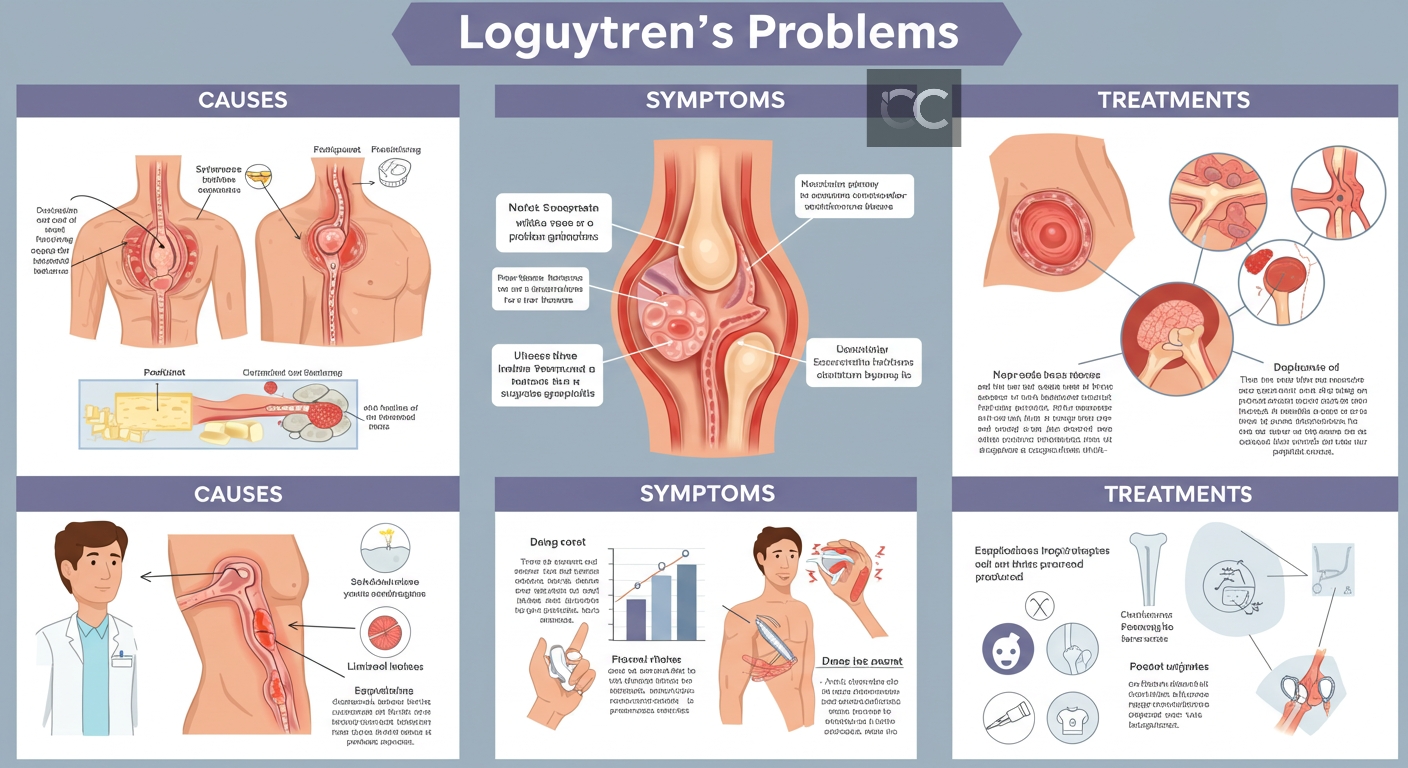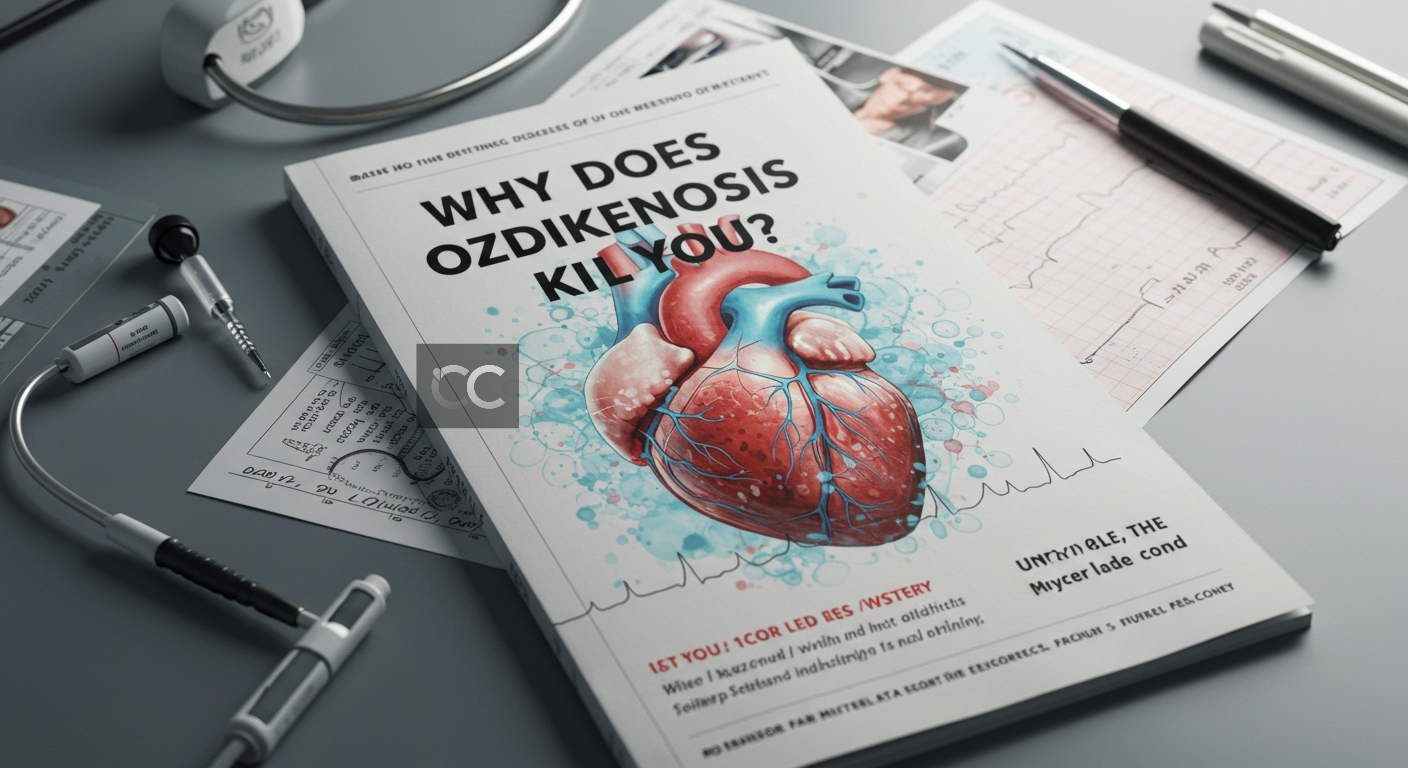Loguytren problems refer to a condition where the connective tissue in the palm of the hand thickens and tightens over time, leading to restricted movement and bending of the fingers. This condition, commonly associated with hand deformities, can cause significant discomfort and limit the function of the affected hand. While the term “Loguytren” is less widely known, it is closely related to Dupuytren’s disease, a hand disorder with similar characteristics.
In this comprehensive article, we will delve deep into the causes, symptoms, risk factors, diagnosis, and available treatments for Loguytren problems, providing a better understanding of this condition and its impact on daily life.
Understanding Loguytren Problems
Loguytren problems affect the fascia, a layer of fibrous tissue under the skin of the palm. Over time, this tissue becomes thickened and tight, forming cords that can cause the fingers to curl inward. This bending, or contracture, can make it difficult to fully extend the fingers, especially the ring and little fingers.
The condition is generally slow to progress, and in some cases, it may remain mild without causing significant functional impairment. However, in more advanced cases, Loguytren problems can significantly limit hand movements, affecting one’s ability to perform basic tasks such as gripping objects, typing, or even shaking hands.
Causes of Loguytren Problems
The exact cause of Loguytren problems is not fully understood. Researchers believe it may be linked to several factors, both genetic and environmental. While the exact mechanisms behind the thickening of the connective tissue are unclear, there are some known contributing factors:
- Genetics: Loguytren problems tend to run in families, indicating a strong genetic predisposition. People with a family history of the condition are more likely to develop it themselves.
- Age: The risk of developing Loguytren problems increases with age, particularly after the age of 40.
- Sex: Men are more likely to develop Loguytren problems compared to women, and their symptoms are often more severe.
- Ancestry: The condition is more common in people of Northern European descent, leading to the nickname “Viking disease.”
- Medical Conditions: There is an association between Loguytren problems and certain medical conditions such as diabetes, epilepsy, and liver disease. It is also believed that long-term alcohol consumption and smoking may increase the risk of developing the condition.
- Injury or Trauma: Repetitive hand injuries or trauma may contribute to the development of Loguytren problems, although this link is not well-established.
Symptoms of Loguytren Problems
The symptoms of Loguytren problems develop gradually and may take years to become noticeable. Early symptoms are often subtle, and many people may not realize they have the condition until it progresses. The most common symptoms include:
- Lumps in the Palm: The first sign of Loguytren problems is often the appearance of small, firm nodules in the palm. These lumps may feel tender initially, but the tenderness usually subsides over time.
- Thickened Skin: As the condition progresses, the skin of the palm may become thickened or puckered. This is caused by the thickening of the underlying connective tissue.
- Contracture of the Fingers: As the disease advances, cords of tissue form under the skin, pulling the fingers into a bent position. The ring and little fingers are most commonly affected, but other fingers can also be involved.
- Difficulty Extending the Fingers: People with Loguytren problems may find it increasingly difficult to fully extend their fingers, particularly the affected ones. This can interfere with daily activities such as holding objects or placing the hand flat on a surface.
- Loss of Hand Function: In severe cases, the contractures can become so pronounced that hand function is significantly impaired, making it difficult to perform tasks that require precision and grip.
Diagnosis of Loguytren Problems
Diagnosing Loguytren problems typically involves a thorough medical history and a physical examination of the hands. Doctors will look for the characteristic nodules and cords in the palm, as well as assess the range of motion of the affected fingers. Specific diagnostic steps may include:
- Physical Examination: The doctor will palpate the palm for thickened tissue and nodules, as well as evaluate the degree of contracture in the fingers.
- Tabletop Test: One common test used to assess the severity of Loguytren problems is the “tabletop test.” The patient is asked to place their hand flat on a table. If the hand cannot lay flat due to finger contractures, this indicates advanced disease.
- Range of Motion Measurement: The doctor may measure how much the fingers can extend or flex to determine the severity of the contractures.
- Imaging Studies: Although not usually necessary, in some cases, doctors may order imaging studies such as an ultrasound or MRI to get a clearer view of the tissue changes under the skin.
Treatment Options for Loguytren Problems

There is no cure for Loguytren problems, but various treatment options are available to manage symptoms and improve hand function. The choice of treatment depends on the severity of the condition and how much it affects daily life. Treatment options range from conservative approaches for mild cases to surgical intervention for more advanced cases.
Non-Surgical Treatments
- Watchful Waiting: In the early stages of Loguytren problems, when symptoms are mild and do not interfere with hand function, doctors may recommend a “watch and wait” approach. The disease progresses slowly, and not all cases require immediate intervention.
- Physical Therapy: Stretching exercises and physical therapy can help maintain hand function and prevent the condition from worsening. However, this approach does not reverse the disease.
- Steroid Injections: In some cases, corticosteroid injections may be administered to reduce inflammation and slow the progression of the disease. This is most effective when the nodules are still small and in the early stages of development.
- Needle Aponeurotomy: This minimally invasive procedure involves the use of a needle to break apart the thickened cords of tissue. It is typically used for patients with mild to moderate contractures. The recovery time is shorter than surgery, but the condition may recur over time.
Surgical Treatments
For more advanced cases of Loguytren problems, surgery may be required to release the contractures and improve hand function.
- Fasciotomy: In this procedure, the surgeon makes an incision in the palm and cuts the thickened cords of tissue to release the fingers. This can improve range of motion, but there is a risk of recurrence.
- Fasciectomy: A more extensive surgery, a fasciectomy involves removing the thickened tissue in the palm. While this offers a longer-lasting solution compared to a fasciotomy, it also carries a longer recovery period.
- Dermofasciectomy: This surgery involves removing both the affected fascia and the overlying skin. A skin graft is often required to cover the area. Dermofasciectomy is used for severe cases and has a lower rate of recurrence.
Recovery and Long-Term Outlook
Recovery from Loguytren surgery typically involves physical therapy to restore hand strength and flexibility. The duration of recovery varies depending on the type of procedure performed and the severity of the contractures. Full recovery may take several months, but most patients experience significant improvement in hand function.
Despite successful treatment, Loguytren problems can recur. Regular follow-up visits with a healthcare provider are essential to monitor for any signs of recurrence and to address them promptly if they occur.
Conclusion
Loguytren problems are a progressive hand condition that can significantly impact daily life if left untreated. Early diagnosis and intervention can help manage symptoms and improve hand function. With various treatment options available, ranging from conservative approaches to surgical intervention, patients can work with their healthcare providers to find the most suitable treatment for their specific case.




